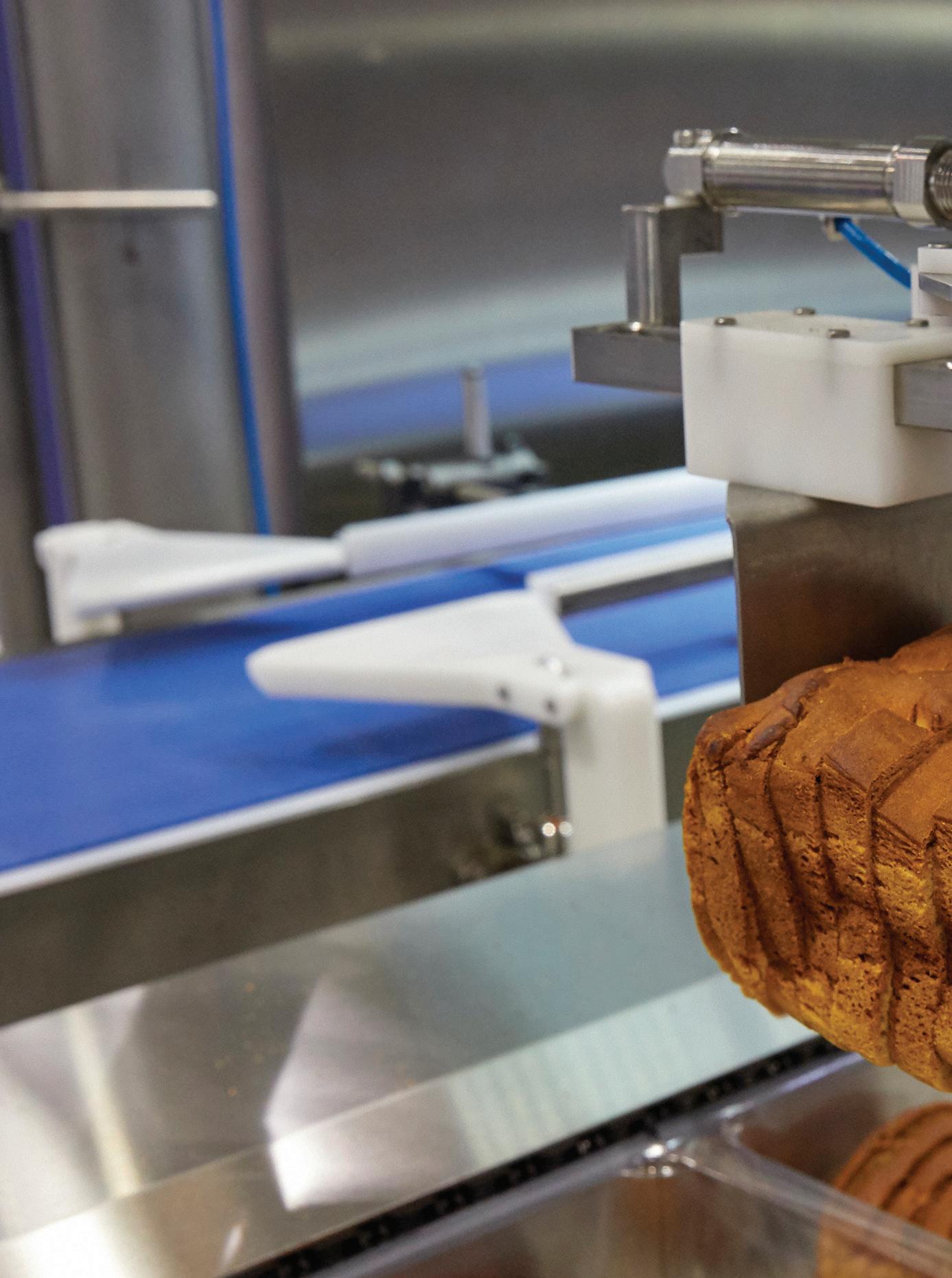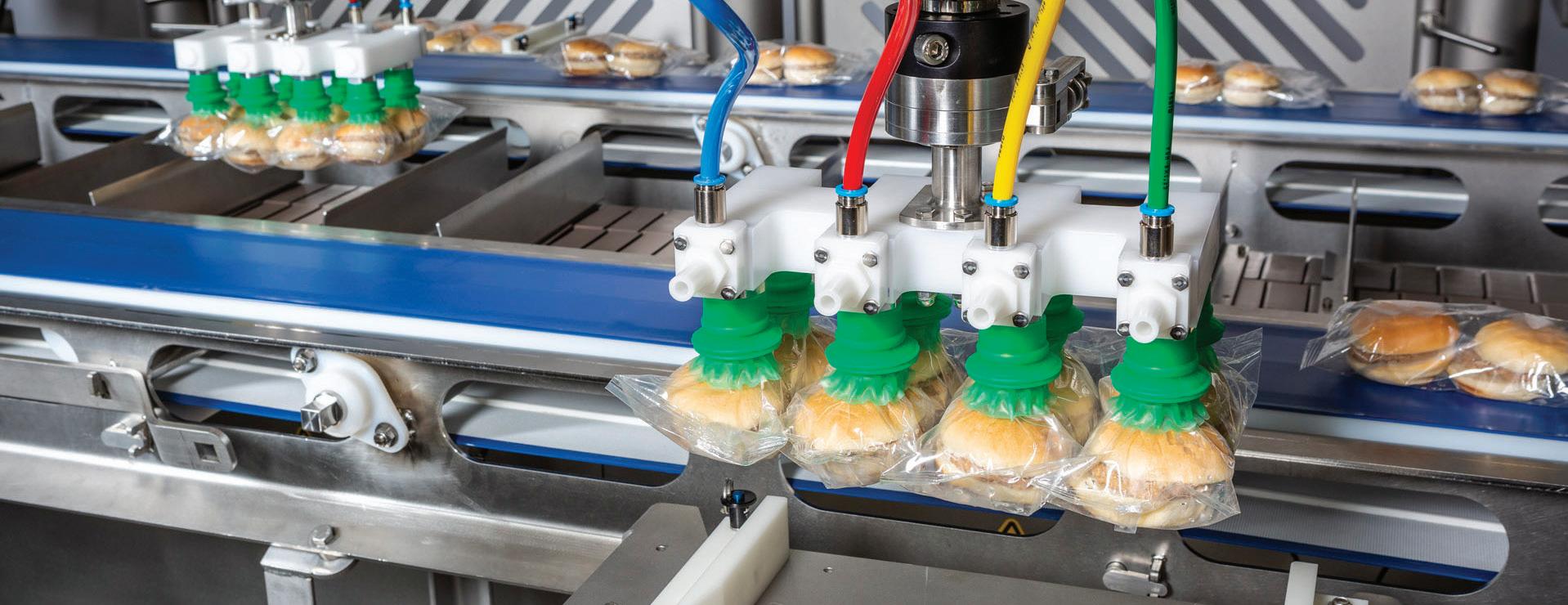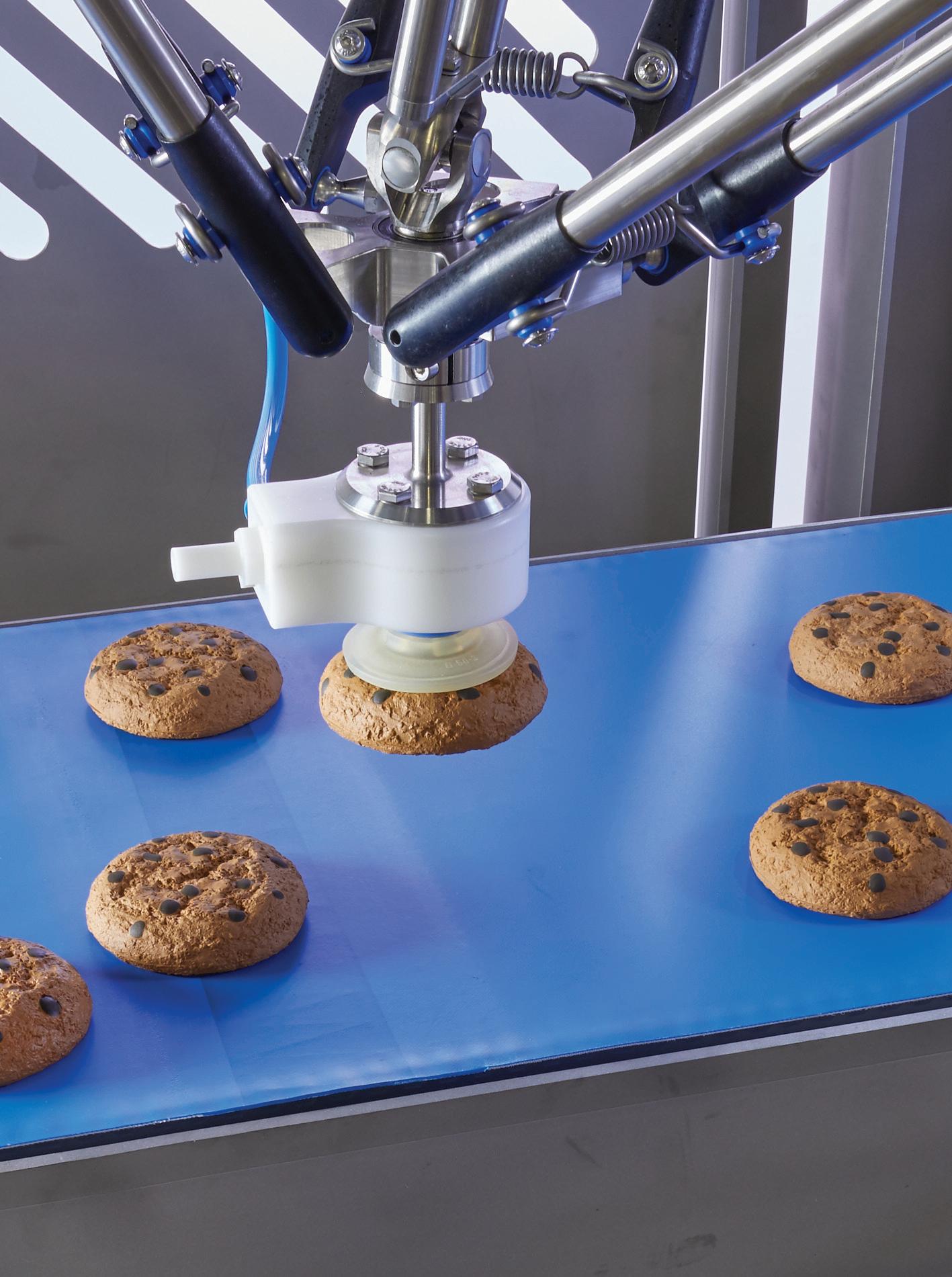
5 minute read
HOLISTIC BUSINESS SOLUTION
from JLS Magazine #4
How automation is helping bakeries beyond cost savings
BY: JOANIE SPENCER
COMMERCIAL BAKING MAGAZINE
Adear Colleague And Friend Loves
TO ASK bakers one particular question: What keeps you up at night? It’s always the first — or last — question they ask a new baker to make their acquaintance. I’ve heard this question for about a dozen years now, and the answer is generally the same. The labor shortage is keeping everyone up at night.
At its worst, entire lines have had to shut down because there was no staff to start them up.
The dwindling workforce is changing how every bakery functions, whether from corporate culture and compensation or with how the lines operate. Baking companies have turned to automation to streamline efficiencies, but in recent years automation has been the key to closing that workforce gap and keeping lines running, whether that’s accommodating for a lack of labor or making life easier for the workforce in place.
There’s a newfound appreciation for workers on the plant floor and an understanding — and recognition of value — for the importance of what they do.
“Leadership is recognizing people who might have been previously overlooked,” said one supply chain leader for a major brand. “But they’re the ones who were showing up every day in the peak of COVID and working overtime when it’s hard to find labor.”
Since 2008, Spencer has covered the retail and wholesale sides of the baking industry. She has served on the board of directors for the American Society of Baking (ASB) and is currently a BEMA board member.

The baking industry of old just worked until the job was done, with or without recognition. But today, the labor force that’s showing up may be ready to do the work, but they’re armed with expectations for a better environment in which to do it.
“Historically, the baking industry has a reputation for being hard work,” said one Texas-based baker whose company makes a variety of products in facilities across the country. “We have to evaluate it. What can we do to improve the climate in our facilities and making the work easier? People don’t want to be dumping 50-lb. bags of ingredients all day long, so we have to eliminate some of those repetitive, monotonous tasks.”
Automation is a key solution for alleviating some of those stressful elements in the bakery.

It’s not enough to create fully automated lines that only require a person or two present to turn on the machine. Baking is more than “button pushing,” and operators must still understand the craft.
Some companies are pairing automation with professional development in how they onboard staff. Resources like training groups and buddy systems have been integral to helping the workforce understand the “why” behind what automated bakery lines do.
“We’ve moved away from office training in the first week to saying, ‘You’re going to do the basics of GMP and safety and get real-life experience right on the plant floor,’” the Texas baker noted. “We have designated trainers that are pairing up with trainees, and at the end of each day management checks in to say, ‘How is your training going?’ That way, we get real-time feedback on the employee experience, and it allows us to really meet people where they are in their jobs.”
Another baker, whose West Coast-based company experienced a change of ownership during the COVID-19 pandemic, described a shift during the past few years that has gotten away from the traditional transactional nature of the business. When a product wasn’t profitable, it was simply cut from the portfolio. But today holds a more solutions-oriented era of collaboration and looking at efficient production as a cost-saving measure.
“We look at what makes sense for the customer and for our business collectively,” they said. “We are stronger and more focused as an organization. The goal is to get product to the end user, and we’re doing that collaboratively with everyone from engineering to line workers and everyone else in the organization.”
That collaborative mindset is critical in this pandemic reality, especially when some bakery plants are looking at line shutdowns if there aren’t enough staff in the bakery because of illness or quarantine.
Another pandemic-related reality is that single-serve, individually wrapped items are becoming the standard in many retail and foodservice establishments. For example, areas in corporate environments that once housed bustling cafes for its office workforce are now often operating at a third capacity. They have single-serve grab-and-go options with maybe one worker behind the counter and a fully electronic checkout. For the bakery suppliers, that puts a lot of pressure on areas such as packaging, which has traditionally been considered one of the most manual stages of the line.
But it also puts pressure on the whole operation when bakers are forced to problem-solve for their foodservice customers who are dealing with as much of the labor crisis as the bakeries themselves. A trip down the tradeshow floor at the National Restaurant Association’s conference in June revealed a host of operators demonstrating robotic technology.
One director of bakery operations for a supplier of bread products to quick-service restaurants described how that lack of labor in foodservice is impacting automation needs for bakers.
“Our particular product requires several handling steps — proofing, baking, cooling — for restaurant operators, and they’re looking at how to save labor and make things easier,” the director said. “So, we have to look at how we make our products in order to take the stress off them.” capital investments, especially heading into IBIE.
From ingredient scaling to eliminating the need to lift certain heavy items, some of the biggest priorities bakers are focusing on revolve around equipment’s ease of use and alleviating the difficulty of certain jobs.
“We’ve already invested in some of our lines and will continue to invest as we monitor outlooks and our marketing calendar,” the West Coast baker said. “I don’t think investments are going to slow down because the issue with labor is still a reality.”
Additionally, for a brand with a robust portfolio, investment in automation will require strategy and prioritization.
“We have to prioritize capacity versus automation, as well as safety projects to improve the environments in all our facilities,” they said. “We’re investing in those kinds of fundamental things first.”
But labor isn’t the only workforce issue that bakers are considering when looking at automation. Safety is playing a huge role as well.
“It’s also about eliminating repetitive tasks,” they added.
While the labor crisis is hitting the baking industry and many of its customers — with projections saying it will be another five years before it gets back to normal — manufacturers of all varieties are also facing massive inflation and bracing for a recession. And that’s impacting not only how they think about automation but also how they plan for
From making up for reduced headcounts — and ensuring the safety of the existing workers — to helping customers accommodate for their own labor shortages, automation needs have gone far beyond efficiency and cost savings. For today’s bakeries, automation has become a holistic business solution.
To learn more, scan the QR code or visit commercialbaking.com









